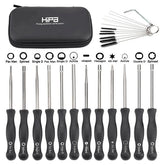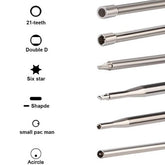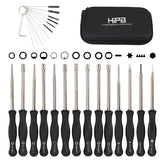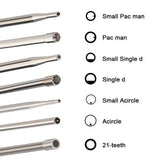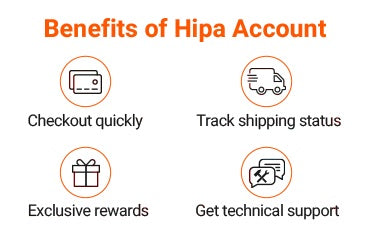Why Does a Chainsaw Chain Kick Back? How to Stay Safe While Using a Chainsaw?
Chainsaws are powerful tools that make cutting and trimming fast and efficient—but if you've ever felt the saw jerk suddenly in your hands, you've experienced kickback, one of the most dangerous risks of chainsaw operation. In this blog, we'll explain what chainsaw kickback is, the reason why, how to avoid it, and how safety features and proper posture can help protect you. We’ll also take a close look at low-kickback chainsaw chains and whether they really help reduce kickback.
What Is Chainsaw Kickback?
Kickback happens when the chainsaw's rotating chain is suddenly forced to stop or slows down abruptly, usually after striking a solid object or getting pinched. This causes the energy of the spinning chain to be redirected, making the saw violently jerk backward and upward—often toward the operator's head or upper body.

The Kickback Zone: What to Watch Out For
The kickback zone is the upper quadrant of the tip of the chainsaw bar. When this area contacts wood or another object, the saw is most likely to kick back.

Avoid using this area of the bar when cutting. Instead, use the bottom of the bar (called the ‘’pulling chain’’ area) or the top of the bar (the ‘’pushing chain’’ area), both of which are safer than the tip.
Movement Trajectory During Kickback
When kickback occurs, the chainsaw typically follows a diagonal upward arc, pivoting from the contact point at the bar tip. The motion is fast, strong, and hard to control, often catching users off guard. This is why proper stance, grip, and awareness are crucial.

Safety Features Designed to Prevent Kickback Injuries
Modern chainsaws come equipped with several safety features specifically to reduce the risk of kickback injury:
Chain Brake: Automatically stops the chain if kickback occurs. It’s either triggered manually by your hand or automatically by the force of the kickback.

Chain Catcher: Prevents a thrown chain from flying back toward the user.

Hand Guards: Protect your hands if the chain breaks or slips.

Throttle Lock: Ensures the chain only moves when you have a firm grip and deliberate throttle control.
Best Practices: The Right Posture for Chainsaw Safety
To protect yourself in case kickback does occur, follow these posture and handling tips:
Grip firmly with both hands: Left hand on the front handle, right hand on the rear handle.
Keep your thumbs wrapped around the handles—especially your left thumb under the front handle to counter kickback force.
Stand to the side of the cutting path, not directly behind the saw.
Plant your feet shoulder-width apart, with knees slightly bent for stability.
Keep the saw close to your body for better control.
Never cut above shoulder height—this increases the risk of serious injury during kickback.
What Is a Low-Kickback Chainsaw Chain?
A low-kickback chain is specially designed with extra safety features to reduce the chance of kickback. These include:

Ramp-shaped depth gauges to limit the size of the cutting bite.
Guard links that help control the cutting angle.
Narrower kerf (cut width) to reduce the amount of force needed.
These chains are commonly used by homeowners and casual users because they provide a more controlled and predictable cutting experience
You Can Check Hipa Low Kickback Chainsaw Chains Here
https://www.hipastore.com/search?q=low+kickback+chainsaw+chain&options
All Hipa Chainsaw Chains Here
https://www.amazon.com/stores/page/BF942BA4-A3DE-47BC-8A61-811C05D7745D
Do Low-Kickback Chains Really Work?
Yes, low-kickback chains are effective in reducing the severity and likelihood of kickback, especially for inexperienced or occasional chainsaw users. However, they are not a substitute for safe handling practices. Even with a low-kickback chain, improper use can still cause dangerous situations.
Final Thoughts
Kickback is one of the most serious hazards when using a chainsaw, but with the right knowledge, gear, and habits, you can stay safe. Avoid the kickback zone, use saws equipped with proper safety features, choose a low-kickback chain if you're not a professional, and always maintain a solid stance when cutting. Stay alert, cut smart, and make safety your top priority every time you pick up a chainsaw.













